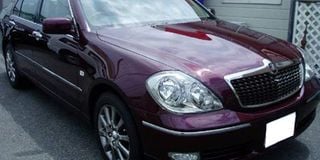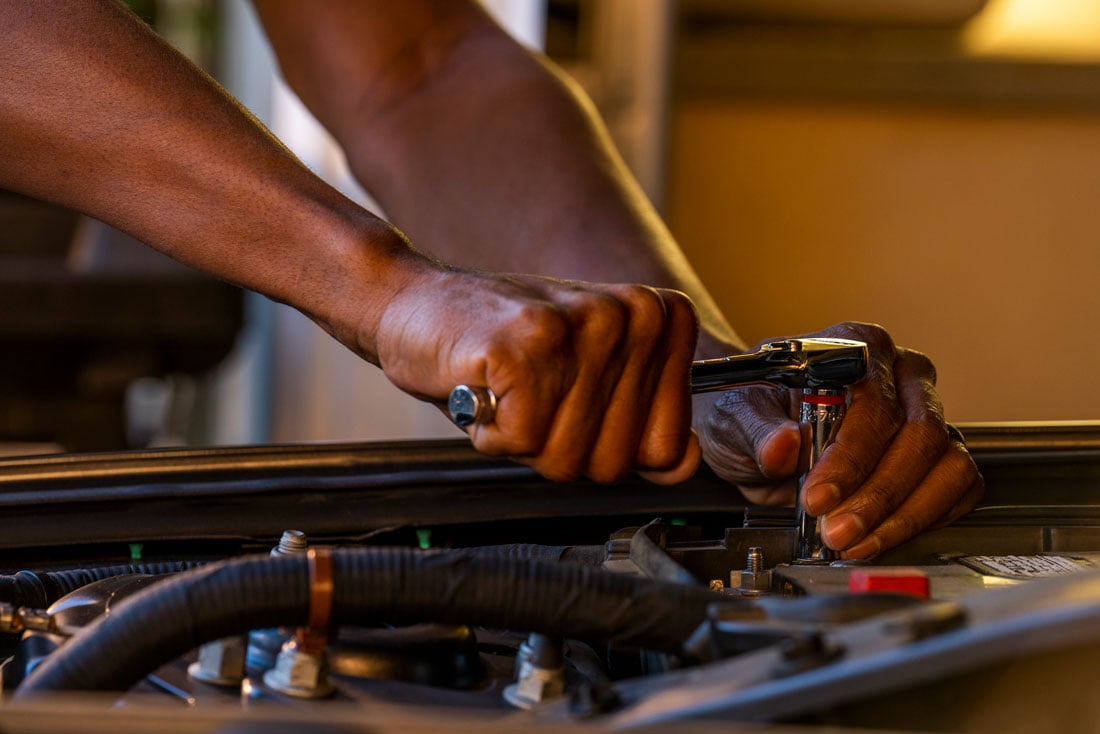Which Toyota brand should I go for?

By sharing some features with the luxurious Lexus, Brevis is in a different league if compared with the Mark II Grande.
I am planning to import a used Japanese car but I am still divided between buying a Toyota Brevis 2004 model and a Toyota Grande Mark II 2002 model. May you please tell me which is the better option, as regards maintenance, efficiency performance and others. In your opinion please, of the two cars which would you buy if you were in my position?
Moshim G.M
The Brevis 2004 and the Mark II Grande 2002 are both developed by Toyota as luxury sedan vehicles. All standard luxury features such as air conditioning, audio CD with mini disc, touch sensitive electric windows and mirrors as well as velour fabric or leather seats are provided. Brevis has better legroom while Mark II offers better head and shoulder room.
Brevis was developed to the highest luxury level of the Lexus. It goes a notch higher than the Mark II. In the Brevis, air-conditioning comes standard with an air purifier and its adjust memory seats can be heated with the throw of a switch. Side and back cameras relay images to a monitor to assist the driver as he parks the car.
The styling features on the Mark II include its grand size, wide angles shiny wide chrome grille and crystal lights but it falls a step below when compared to the equally big but better moulded Brevis. Brevis styling cues from Lexus include smooth edges and eye catching beautifully moulded front and rear bumpers as well as head lights and tail lights. Brevis is big but attractively compact.
Performance of both cars is the same if you choose to buy the popular and economical 1JZ-FSE 2.5 litre petrol engine with VVTi (intelligent variable valve timing) fitted in both cars. Fuel economy is about 12.5 kms per litre with an engine output of 200 horsepower at 3,600 rpms. However, if you are a high performance loving ‘gear head’ Brevis offers the2JZFSE 3.0 litre petrol engine with D4 VVTi economy which delivers an output of 220 horsepower. Mark II beats that performance with a 2.5 litre petrol engine with twin turbo chargers. It delivers a whopping 280 horsepower but comes with a higher fuel bill. Maintenance challenges of both cars are the same. Fast moving engine service parts are available at Toyota new parts dealers around time. However, new body and suspension parts are difficult to find. You can order them from Dubai and Japan or buy used ones which are available at a steep price downtown.
The weighing scales will be tipped by your choice between Brevis styling, luxury and comfort or Mark II’s high performance. Both cars have equally high safety standards with anti-lock brakes, front dual and side airbags as well as side impact protection beams. I would settle for the Brevis because it has an efficient (powerful and economical) engine performance either with the 2.5 or 3.0 litre engines.
Brevis has better looks and superior exterior with interior design cues borrowed from the Lexus. Brevis will have a better resale value because of its modern looks.
Thanks for your insightful advice. I own a Toyota Rav 4 1996 model with around 180,000km on the mileage. It has a twin cam engine with 16 valves. I bought it six months ago from a top manager and it looked impeccably maintained. Even my mechanic agreed. But two months ago, it developed problems when starting.
When starting it in the morning especially, the accelerator pedal takes long to pick. My mechanic advised that I give it three minutes ‘to warm up before driving off’, which is odd, surely. Then another problem came up. Upon igniting, the engine light flickers rapidly and a rapid ticking sound in the engine starts. At that point the car cannot respond until my mechanic does something and all is well again. Every mechanic that opens it comments about the twin cam engine being fragile and not ideal. Educate me on this twin cam engine and what I can do to rectify the problem.
Your twin cam RAV4 has a Double Overhead camshaft (DOHC) engine valve train. The DOHC layout is used in most modern cars. DOHC makes it possible to fit multiple valves per cylinder and place intake valves on the opposite side from exhaust valves. This enables better and faster intake of air and evacuation of exhaust to produce more horsepower, faster acceleration and better fuel economy with a smaller engine volume.
The tradeoff is the need for a serious maintenance regime with the use of reputable high grade petrol engine oil, genuine parts and regular service. The check engine light flickering intermittently on your instrument cluster announces an engine emission fault.
This is caused by the failure of one or more components which affect emission control. Ask your mechanic to inspect your engine carefully and rule out worn out spark plugs, damaged high tension leads, dirty air filter, a clogged throttle valve and use computer diagnosis to check for damaged sensors (coolant temperature sensor, intake air temperature sensor, oxygen sensors, camshaft or crank shaft position sensors).
The fuel supply pressure should be evaluated to confirm operation of the fuel pump, condition of the filter and the injectors (in case they are blocked or malfunctioning). Any of these factors affect emission and cause your poor cold start and engine performance.




